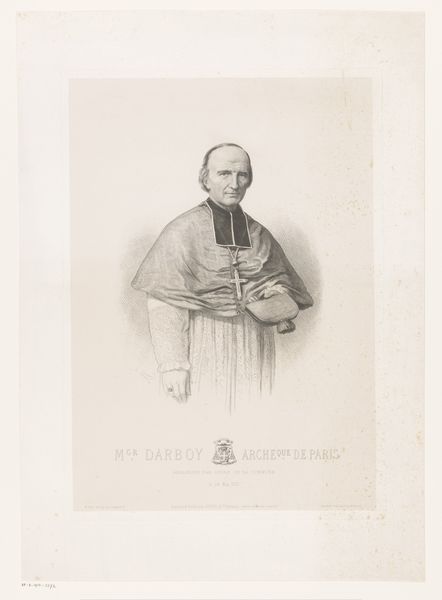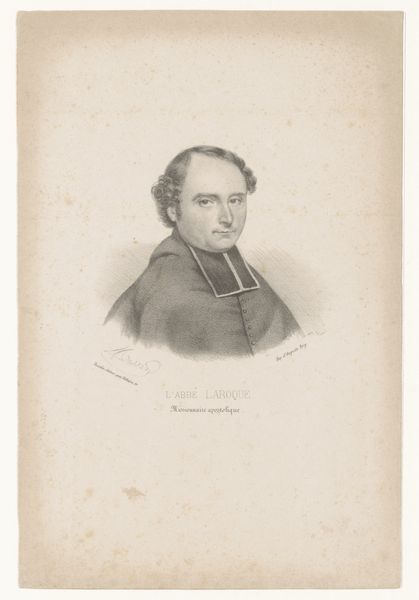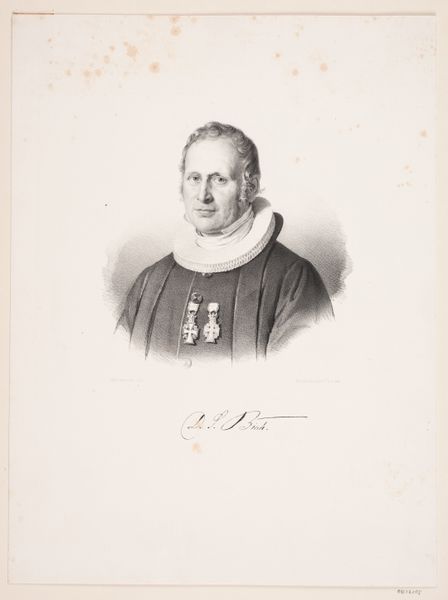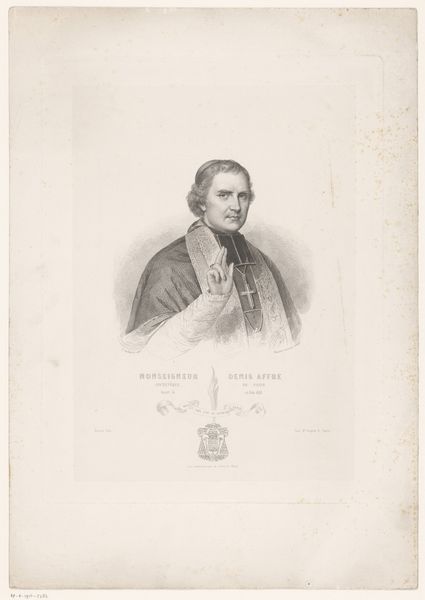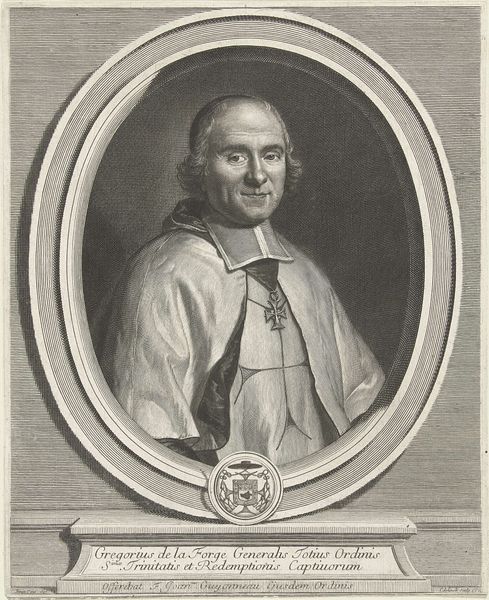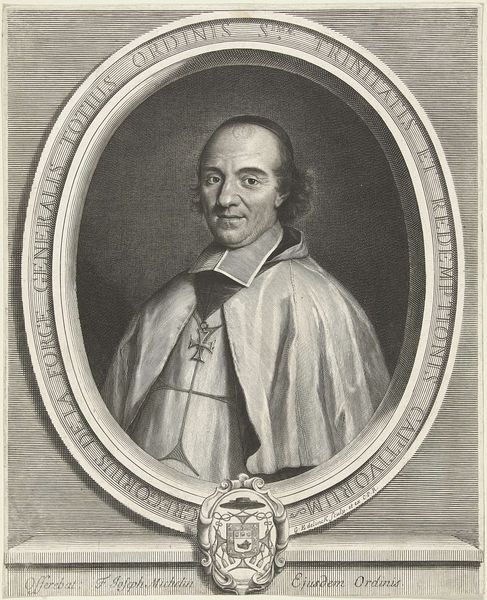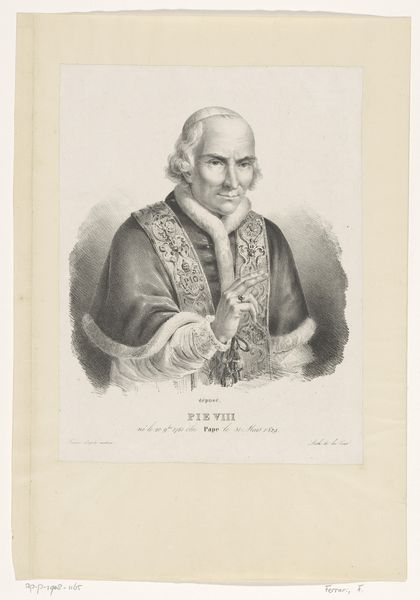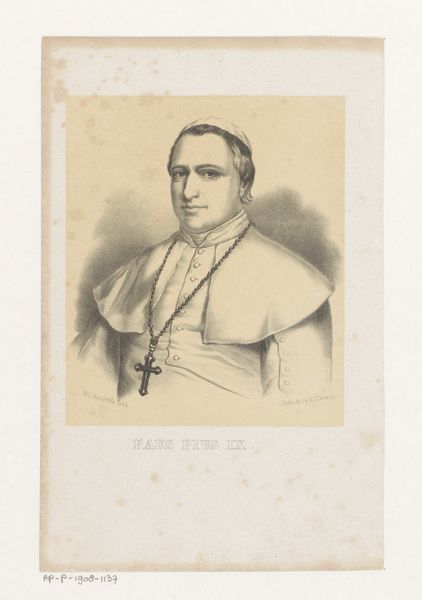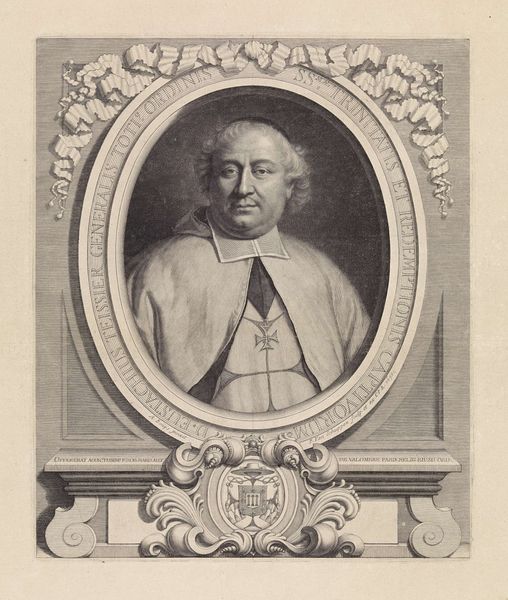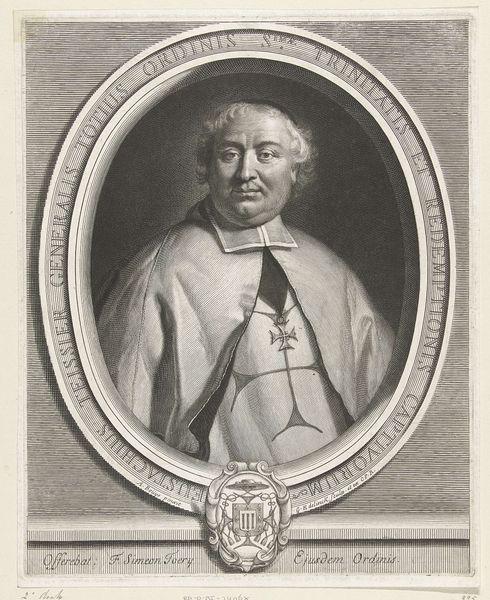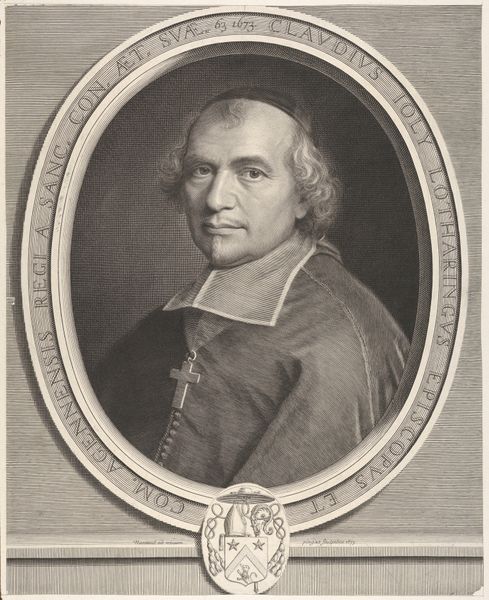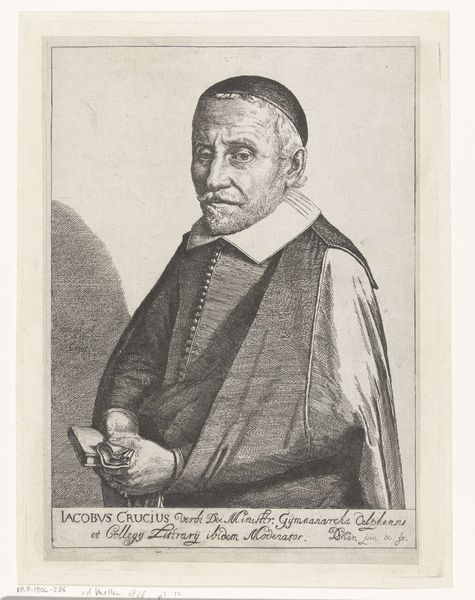
drawing, pencil
#
portrait
#
drawing
#
pencil drawing
#
pencil
#
portrait drawing
#
academic-art
#
realism
Dimensions: height 274 mm, width 182 mm
Copyright: Rijks Museum: Open Domain
Curator: This drawing by Alphonse Farcy, completed in 1849, is entitled “Portret van kardinaal Hugues de La Tour d'Auvergne-Lauraguais." It's a pencil drawing, showcasing the Cardinal in detail. Editor: It strikes me as a portrait of profound stillness. The achromatic palette only adds to the mood. Look how the figure emerges from the pale background, as though being revealed from shadow. Curator: Notice how Farcy uses the pencil medium to create variations in tone and texture. The shading around the Cardinal's face gives depth, and the way the light reflects off his sleeves gives them a certain volume. The carefully etched lines create the overall form, providing us with insight to his material. Editor: Indeed. I think its creation is tied directly to the Cardinal himself. It's easy to consider the role the Church would play during this period, particularly with shifts in French society and governance post revolution, but also his role. His expression is hard to read. Is he thoughtful or reserved? Is he contemplative of the power that he weilds? Curator: Consider also the symbolism implied within. His clerical collar and the prominent crucifix mark his devotion. However, he holds an envelope or letter that may indicate earthly obligations, such as communication and earthly responsibilities. The picture is not only about religion but perhaps about the confluence of both sacred and profane responsibilities. Editor: I think these formal choices mirror the broader shifts in society. Portraiture, even religious portraiture, took on a very real social power, as artists documented figures of authority but also opened a space for critiques, endorsements, or conversations of authority. Curator: What I appreciate is how the interplay of technique and tone results in a cohesive artwork. In the meticulous rendering of detail—consider the lace at his cuffs. The medium of pencil makes his robes seem all the more real, giving the viewer insight into the world of the sitter. Editor: And it is those kinds of insights—the dialogue that pieces like this start—that remind us how art is inseparable from its time, forever reflecting on those values and questions. Curator: Exactly. And the skill and perspective in this pencil drawing creates a lasting, quiet impact on its viewers, encouraging conversation about meaning, power, and mortality.
Comments
No comments
Be the first to comment and join the conversation on the ultimate creative platform.
